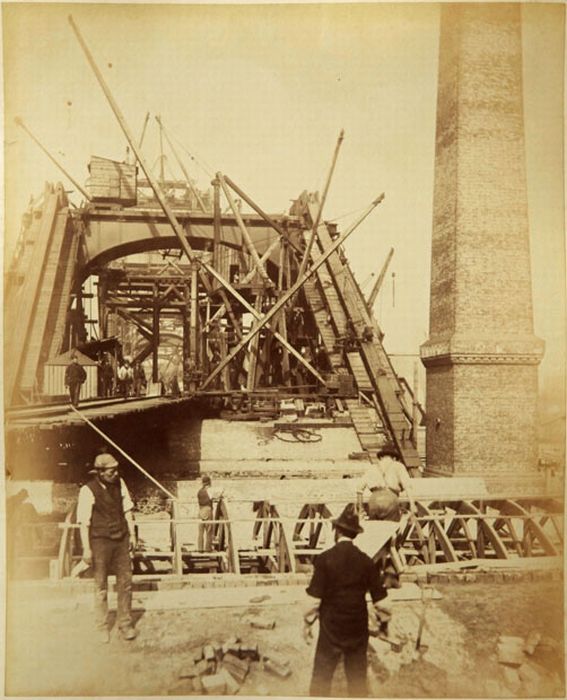|
|
History: Construction Of Tower Bridge, 1886-1894, London, England, United Kingdom
|
During World War II, as a precaution against the existing engines being damaged by enemy action, a third engine was installed in 1942: a 150 hp horizontal cross-compound engine, built by Vickers Armstrong Ltd. at their Elswick works in Newcastle upon Tyne. It was fitted with a flywheel having a 9-foot (2.7 m) diameter and weighing 9 tons, and was governed to a speed of 30 rpm. The engine became redundant when the rest of the system was modernised in 1974, and was donated to the Forncett Industrial Steam Museum by the Corporation of the City of London.
• Navigation control
To control the passage of river traffic through the bridge, a number of different rules and signals were employed. Daytime control was provided by red semaphore signals, mounted on small control cabins on either end of both bridge piers. At night, coloured lights were used, in either direction, on both piers: two red lights to show that the bridge was closed, and two green to show that it was open. In foggy weather, a gong was sounded as well.
Vessels passing through the bridge had to display signals too: by day, a black ball at least 2 feet (0.61 m) in diameter was to be mounted high up where it could be seen; by night, two red lights in the same position. Foggy weather required repeated blasts from the ship's steam whistle.
|
|









